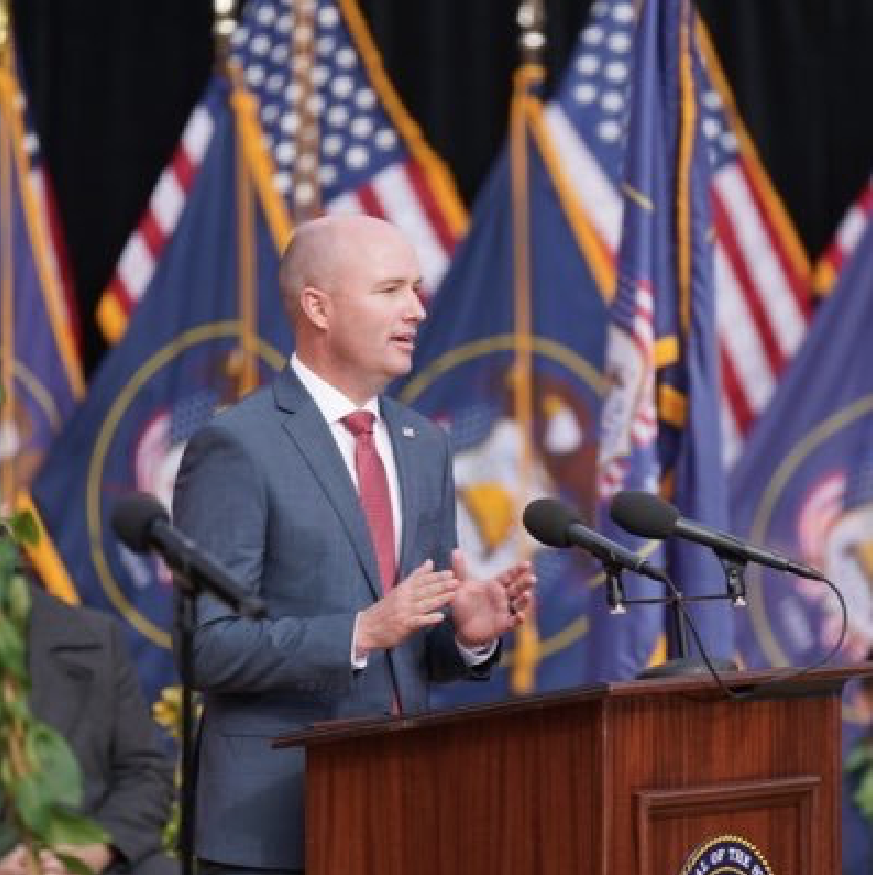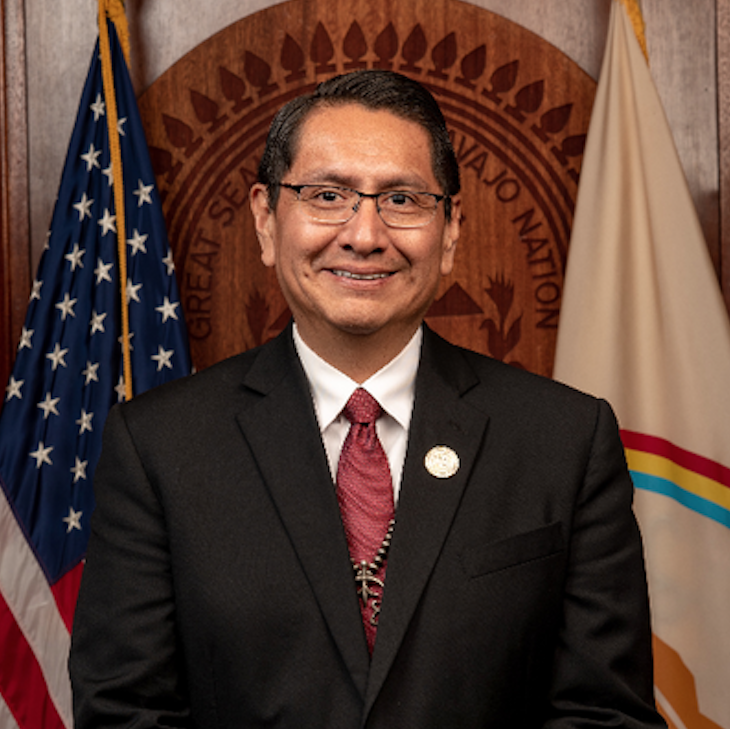Implementation for Utah's Roads Water Systems Forests Intersections Highways Power Grids Airports
Looking around our communities, it’s not uncommon to see roads, bridges and other infrastructure in need of serious repair. And as one of the country’s fastest growing states, Utah is in need of more infrastructure investment. This is why it was important that I was able to give Utahns a seat at the table in helping to negotiate the bipartisan Infrastructure Investment and Jobs Act.
Our bipartisan infrastructure bill, signed into law on November 15, 2021, provided an historic $550 billion investment in our country’s physical infrastructure without raising taxes, without adding trillions to the deficit, and spending less than one-third of the President’s original plan. This bill will help Utah make smart investments in our transportation and infrastructure systems that better position us for future growth.
This page is designed to be a resource for Utahns who are seeking further information on how the law can benefit Utah communities and their infrastructure needs. Find below information on funding opportunities and other announcements as provisions in the bill continue to be implemented.
Details on how the bill would benefit Utah can be found here, and text of the legislation can be found here.



Bus & Bus Facilities Competitive Grants – This existing $2 billion program at the Department of Transportation provides capital funding to replace, rehabilitate, purchase, or lease buses and bus related equipment and to rehabilitate, purchase, construct, or lease bus-related facilities – as well as capital funding for low or no emissions bus projects. Fiscal Year 2021 grant selections will be announced soon. Learn more here.
National Infrastructure Project Assistance (also known as “Megaprojects” or MEGA) – This $5 billion competitive grant program supports multi-modal, multi-jurisdictional projects of regional or national significance. Communities are eligible to apply for funding to complete critical large projects that would otherwise be unachievable without assistance. Selection criteria for the program will be posted on the Department of Transportation website in February 2022. Learn more here.
Infrastructure for Rebuilding America (INFRA) Grants – This Department of Transportation program supports highway and rail projects of regional and economic significance. Learn more here.
Safe Streets and Roads for All – This new $5 billion competitive grant program at the Department of Transportation will provide funding directly to and exclusively for local governments to support their efforts to advance “vision zero” plans and other complete street improvements to reduce crashes and fatalities, especially for cyclists and pedestrians. Applications are expected to open in May 2022. Learn more here.
Charging and Fueling Infrastructure Grants – In addition to the $5 billion formula program distributed to states, this $2.5 billion discretionary grant program at the Department of Transportation will fund the strategic deployment of publicly accessible electric vehicle charging infrastructure, as well as hydrogen, propane, and natural gas fueling infrastructure, along designated alternative fuel corridors and in communities. The Department is seeking comments on program design here.
Clean School Bus Program – This new $5 billion competitive grant program at the Environmental Protection Agency (EPA) will provide funding to replace existing school buses with low- or zero-emission school buses. Learn more here.
Reconnecting Communities – The Bipartisan Infrastructure Law creates a first-ever $1 billion program at the Department of Transportation to reconnect communities divided by transportation infrastructure – particularly historically disadvantaged communities too often nearly destroyed or cut in half by a highway. This new competitive program will provide dedicated funding to state, local, metropolitan planning organizations, and tribal governments for planning, design, demolition, and reconstruction of street grids, parks, or other infrastructure to address these legacy impacts. Application will be open in the second quarter of 2022. Learn more here.
Rural Surface Transportation Grant – This new $2 billion competitive grant program at the Department of Transportation will improve and expand surface transportation infrastructure in rural areas, increasing connectivity, improving safety and reliability of the movement of people and freight, and generate regional economic growth. This amount includes specific set asides for small projects ($200 million), rural roadway lane departure improvements ($300 million), and the Appalachian Development Highway System ($500 million). Learn more here.
Rebuilding American Infrastructure Sustainably and Equitably (RAISE) Grants – This existing competitive grant program at the Department of Transportation provides $7.5 billion with an additional $7.5 billion subject to Congressional approval in funding for road, rail, transit, and other surface transportation of local and/or regional significance. Selection criteria safety, sustainability, equity, economic competitiveness, mobility, and community connectivity. Applications will open in the first quarter of 2022. Learn more here.
Transit Oriented Development (TOD) Planning Program – The Bipartisan Infrastructure Law, enacted as the Infrastructure Investment and Jobs Act, continues the competitive Transit Oriented Development (TOD) planning program, that provides funding for efforts associated with an eligible transit project for which the project sponsor will seek funding through FTA’s Capital Investment Grants Program. TOD focuses growth around transit stations to create compact, mixed-use communities with easy access to jobs and services. TOD capitalizes on public investments in transit and supports transit systems by increasing ridership and fare revenue. Learn more here.
University Transportation Centers – DOT invests in the future of transportation through its University Transportation Centers (UTC) Program, which awards and administers grants to consortia of colleges and universities across the United States. The UTC Program advances the state-of-the-art in transportation research and technology, and develops the next generation of transportation professionals. The Congressionally-mandated program has been in place since 1987 to help address our Nation’s ever-growing need for the safe, efficient, and environmentally sound movement of people and goods. Apply here.
Natural Gas Distribution Infrastructure Safety and Modernization Grants – This grant funding is to be made available to a municipality or community owned utility (not including for-profit entities) to repair, rehabilitate, or replace its natural gas distribution pipeline systems or portions thereof or to acquire equipment to (1) reduce incidents and fatalities and (2) to avoid economic losses. Learn more here.
Railroad Crossing Elimination Program – This program supports the nation’s rail network through a variety of competitive and dedicated grant programs designed to improve highway-rail grade crossing safety and improve the mobility of people and goods. Learn more here.
Ferry Service For Rural Communities – The Infrastructure Investment and Jobs Act establishes a Ferry Service for Rural Communities Program that makes federal resources available to states to ensure basic essential ferry service is provided to rural areas. Learn more here.
All Stations Accessibility Program – The Infrastructure Investment and Jobs Act establishes a new All Stations Accessibility Program (ASAP) to provide federal competitive grants to assist eligible entities in financing capital projects to upgrade the accessibility of legacy rail fixed guideway public transportation systems for people with disabilities, including those who use wheelchairs, by increasing the number of existing stations or facilities for passenger use that meet or exceed the new construction standards of Title II of the Americans with Disabilities Act of 1990 (42 U.S.C. 12131 et seq.). Learn more here.
State of Good Repair and Rail Vehicle Replacement Program – The Infrastructure Investment and Jobs Act continues the State of Good Repair grants program. This program provides financial assistance to transit agencies that operate fixed-guideway and high-intensity motorbus systems for the maintenance, replacement, and rehabilitation of capital assets, including competitive grants for rail rolling stock, as well as for the development and implementation of transit asset management plans. These funds reflect a commitment to ensuring that public transportation operates safely, efficiently, reliably, and sustainably so communities can offer balanced transportation choices that help to improve mobility, reduce congestion, and encourage economic development. Learn more here.
National Culvert Removal, Replacement, and Restoration Grant Program – The Office of the Secretary’s National Culvert Removal, Replacement and Restoration program provides supplemental funding for grants to a State, local government, or an Indian Tribe on a competitive basis for projects that replace, remove, and/or repair culverts or weirs. Grants are available until expended. Learn more here.
Consolidated Rail Infrastructure & Safety Improvements Grant Program – The Federal Railroad Administration supports the nation’s rail network through a variety of competitive and dedicated grant programs designed to develop safety improvements, and encourages the expansion and upgrade of passenger and freight rail infrastructure and services. Learn more here.
Strengthening Mobility and Revolutionizing Transportation (SMART) Grants – The Office of the Secretary’s Strengthening Mobility and Revolutionizing Transportation Grant program provides supplemental funding grants to rural, midsized, and large communities to conduct demonstration projects focused on advanced smart city or community technologies and systems in a variety of communities to improve transportation efficiency and safety. Grants are available until expended. Learn more here.
Emergency Watershed Protection Program – This existing Department of Agriculture program will provide $300 million in technical and financial assistance to project sponsors for the design and construction of measures to help repair damages from a recent disaster. Applications open in February. Learn more here.
Middle Mile Grants Program – This new $1 billion program at the Department of Commerce provides grants for the construction, improvement or acquisition of middle mile broadband infrastructure. Applications will likely open during the second quarter of 2022.
State and Local Cybersecurity Grant Program – This new $1 billion program at the Department of Homeland Security makes available federal funds to state, local, and tribal governments to address cybersecurity risks and cybersecurity threats to information systems that they own or operate. Applications will likely open during the third quarter of 2022.
Flood Mitigation Assistance (FMA) Grant – The Flood Mitigation Assistance Program is a competitive grant program that provides funding to states, local communities, federally recognized tribes and territories. Funds can be used for projects that reduce or eliminate the risk of repetitive flood damage to buildings insured by the National Flood Insurance Program. Learn more here.
Brownfields Remediation Program – This existing EPA program will provide $1.2 billion in grants and technical assistants to communities to assess and safely clean-up contaminated properties and offer job training programs. Communities are currently able to request funding for Targeted Brownfields Assessments through their regional EPA office. Additional competitive funding opportunities will be announced this spring. Learn more here.
Energy Efficiency and Conservation Block Grants – This Department of Energy block grant program will provide $550 million to states, local governments, and tribes for projects that reduce energy use, increase energy efficiency, and cut pollution. The first funding opportunity is expected for release in the Fall of 2022. Learn more here.
Grants for Energy Efficiency and Renewable Energy Improvements in Schools – This new Department of Energy Program will provide $500 million for local government education agencies and nonprofit partners to make energy efficiency, renewable energy, and clean vehicle upgrades and improvements at public schools. The opportunity to apply for funding is expected to be open in the Fall of 2022. Grants are available until expended. Learn more here.
Energy Improvement in Rural or Remote Areas – This new Department of Energy program will provide $1 billion to entities in rural or remote areas (defined as cities, towns, or unincorporated areas with fewer than 10,000 inhabitants) to increase environmental protection from the impacts of energy use and improve resilience, reliability, safety, and availability of energy. Applications for funding are expected to be open in the Fall of 2022. Funding includes $200,000,000 appropriated annually for fiscal years 2022 through 2026 (to remain available until expended). Learn more here.
Grants for Energy Efficiency and Resilience Code Adoption – This Department of Energy program will provide $225 million to state energy agencies, in partnership with local building code agencies, codes and standards developers, utilities, and other entities, to enable sustained, cost-effective implementation of updated building energy codes to save customers money on their energy bills. Applications for funding are expected to be open by the end of 2022.
Regional Clean Hydrogen Hubs – This new Department of Energy program will provide $8 billion to support the development of at least four regional clean hydrogen hubs to improve clean hydrogen production, processing, delivery, storage, and end use.Applications for funding will open in the Summer of 2022. Grants are available until expended. Learn more here.
Smart Grid Investment Grant Program and Energy Sector Operational Support For Cyber Resilience Program – These two Department of Energy programs will provide $3 billion and $50 million, respectively, for electric utilities, including municipal and co-operative utilities, to modernize the electricity grid and increase resilience to cybersecurity threats. Applications for the Smart Grid program are expected to be open by the end of 2022, and applications for the Cyber Resilience program are expected to be open in the Summer of 2022. Grants will be available until expended. Learn more here.
Transportation
Federal Transit Administration Apportionments – The Federal Transit Administration (FTA) announced that Utah will receive a total of $126,408,126 in funding through FTA formula programs this year, which includes funding from both the Highway Trust Fund and appropriations provided by the Bipartisan Infrastructure Law. Learn more here.
Bridge Replacement, Rehabilitation, Preservation, Protection, and Construction Program (Bridge Formula Program) – This program, to be administered by the Federal Highway Administration, represents the single largest dedicated bridge investment since the construction of the interstate highway system. FHWA released the first tranche of Bridge Formula Program funding to states for Fiscal Year 2022 in addition to the program guidance. Learn more here.
Federal Aid Highway Program Funding Apportionment – The U.S. Department of Transportation’s Federal Highway Administration (FHWA) announced that it is providing $52.5 billion in funding to all 50 states and the District of Columbia. This funding will help reduce the backlog of major repairs for highways and bridges and increase the number of communities that have strategies to reduce traffic deaths and serious injuries. Learn more here.
Bridge Investment Program – This program, to be administered by the Federal Highway Administration, represents the single largest dedicated bridge investment since the construction of the interstate highway system – providing $26.5 billion to states, the District of Columbia and Puerto Rico over five years and $825 million for Tribal transportation facilities. The total amount that will be available to states, D.C. and Puerto Rico in Fiscal Year 2022 is $5.3 billion along with $165 million for tribes. Learn more here.
Water
Central Utah Project – The Infrastructure Investment and Jobs Act provides a total of $50 million to the Central Utah Project Completion Act ($40 million allocated to the Central Utah Project Completion Account and $10 million to the Mitigation and Conservation Account). Funding is provided as emergency appropriations and is available for obligation until expended.
Drinking Water State Revolving Fund Programs – The Clean Water State Revolving Fund (CWSRF) program is a federal-state partnership that provides communities low-cost financing for a wide range of water quality infrastructure projects. The Environmental Protection Agency has provided cumulative financial data about the DWSRF. The first year allotment to Utah includes nearly $44 billion in total SRF funding. Learn more here.
Pre-Selections for over $1 Billion in Mitigation Funding to Make Communities More Resilient
On Aug. 1, Vice President Kamala Harris and FEMA Administrator Deanne Criswell announced the finalists for $1.16 billion in climate resilience funding through two competitive grant programs to help communities across the nation enhance climate and disaster resiliency. The existing FEMA program will provide $1 billion through the Building Resilient Infrastructure and Communities (BRIC) national competition and $160 million through the Flood Mitigation Assistance (FMA) program towards projects that help improve community resiliency to a multitude of hazards including floods, droughts and wildfires.
Wildfires
Wildland Fire Mitigation and Management Commission – The Departments of the Interior, Agriculture, and the Federal Emergency Management Agency (FEMA) announced that they are now accepting applications for members to the Wildland Fire Mitigation and Management Commission, which Romney negotiated and secured in the Infrastructure Investment and Jobs Act. Modeled after Senator Romney’s Wildland Fire Mitigation and Management Commission Act, the wildland fire commission is tasked with forming federal policy recommendations and strategies on ways to better prevent, manage, suppress and recover from wildfires. Apply here.
10 Year Strategy to Confront the Wildfire Crisis – The Bipartisan Infrastructure Law provides nearly $3 billion to reduce hazardous fuels and restore America’s forests and grasslands, along with investments in fire-adapted communities and post fire reforestation. The strategy calls for the Forest Service to treat up to an additional 20 million acres on national forests and grasslands and support treatment of up to an additional 30 million acres of other federal, state, Tribal, private and family lands. Fuels and forest health treatments, including the use of prescribed fire and thinning to reduce hazardous fuels, will be complemented by investments in fire-adapted communities and work to address post-fire risks, recovery and reforestation.
Broadband & Cyber
ReConnect Program – The ReConnect Loan and Grant Program furnishes loans and grants to provide funds for the costs of construction, improvement, or acquisition of facilities and equipment needed to provide broadband service in eligible rural areas. The application window is now closed.
Energy & Environment
Clean Hydrogen Initiatives – The Department of Energy announced two Requests for Information (RFI) to collect feedback from stakeholders to inform the implementation and design of the Bipartisan Infrastructure Law’s Regional Hydrogen Hub and the Electrolysis and Clean Hydrogen Manufacturing and Recycling Programs. This request will help accelerate progress, reduce technology cost, and ramp up the use of hydrogen as a clean energy carrier. Learn more here.

